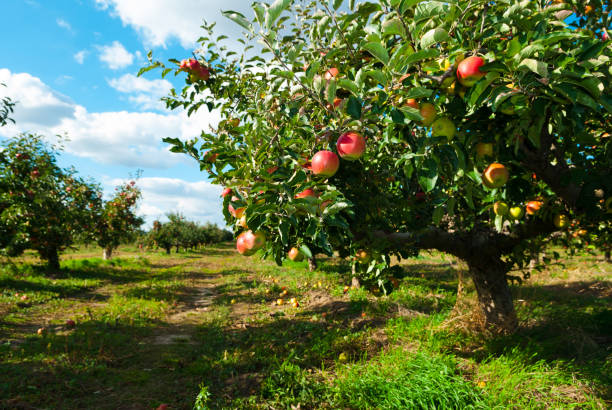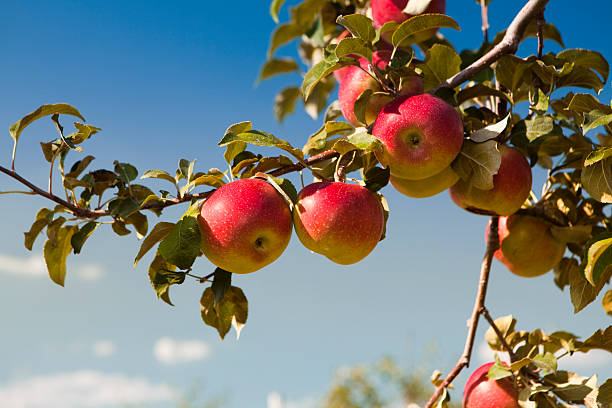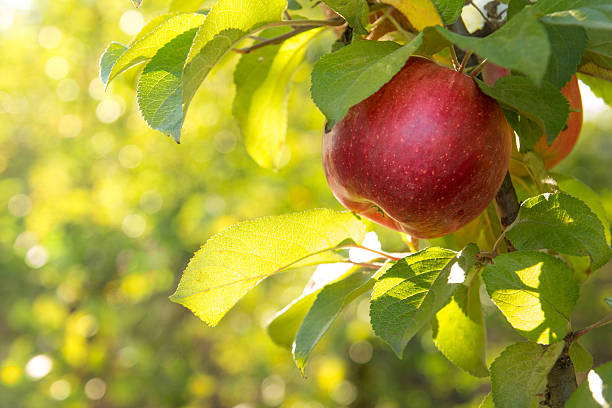
Meta Description: Explore the comprehensive guide on apple tree growth, emphasizing dwarf apple trees, standard-size trees, fruit-bearing timelines, and effective care techniques. Learn about apple tree health, annual pruning, susceptibility to pests, and more for a bountiful harvest.
Nurturing Apple Trees: A Journey from Seed to Fruit
The Initial Phase: Germination of Apple Seeds
Germination signifies the birth of an apple tree, a phase where the seed requires an optimal mix of water, temperature, and oxygen to begin growth. This phase is marked by the swelling of the seed as it absorbs water, triggering the previously dormant embryo. Two critical developments occur here: the growth of the root (radicle) into the soil and the emergence of the shoot (plumule) as it reaches for light.
The Seedling Stage: Growth Above Ground
Emerging above the soil, the seedling stage is where the plant becomes visible, marking a critical period for photosynthesis. The development of the first leaves is essential for the plant to convert sunlight into energy. Strong root establishment is a priority, requiring vigilant care to ensure the young tree’s survival and health.
Growth and Development: The Sapling Stage
As the tree enters the sapling stage, it starts to exhibit more mature features such as height, a sturdy trunk, and thicker branches. This stage is crucial for the apple tree as it develops its structural integrity, necessary for future fruit production. Adequate support and care during this stage are vital for ensuring the tree’s proper growth and development.
Maturation: The Apple Tree in Full Bloom
The maturation of an apple tree is a momentous event, a stage where the tree finally comes into its own, showcasing the full glory of its growth and care. This mature stage is not just a phase but a dynamic period of fruition and renewal that continues year after year.
Entering the Fruit-Bearing Phase

As the apple tree enters its mature stage, typically around 4-10 years after planting, depending on the variety, it begins its most anticipated phase: fruit bearing. This period marks a significant shift in the tree’s life cycle. The tree, now robust and well-established, starts to channel its energy into flowering and producing fruit. The sight of the first blossoms is a reward for the years of nurturing and a precursor to the harvest.
The Bloom: A Spectacle of Nature
The blossoming of an apple tree is a breathtaking spectacle. Clusters of delicate, white to pink flowers emerge, enveloping the tree in a fragrant, ethereal veil. This blooming is not just a visual treat but a critical phase in the pollination process. Bees and other pollinators are attracted to these flowers, playing a vital role in the cross-pollination necessary for fruit development. The health and abundance of these blooms are indicators of the tree’s overall health and the potential yield of the season.
Fruit Development: From Flower to Apple
Following successful pollination, the flowers gradually give way to tiny fruitlets. This initial stage of fruit development is crucial. The tree may undergo a natural process known as ‘June drop,’ where it self-thins excess fruitlets. This is a natural mechanism to ensure that the remaining fruits develop optimally without overburdening the tree.
As summer progresses, these fruitlets grow and mature into apples. The rate of growth and the ultimate size and quality of the fruit depend on several factors, including the variety of the apple, the tree’s health, weather conditions, and the care provided during the growing season.
Ongoing Care for Sustainable Harvest

Even in its mature stage, an apple tree requires consistent care for a sustainable harvest. This includes regular watering, especially during dry spells, to ensure the developing fruits receive adequate moisture. Nutritional needs must be met through well-timed fertilization, providing the tree with essential nutrients to support its fruit production.
Pruning remains a critical task even in the mature stage. Strategic pruning helps in maintaining the tree’s shape, allowing sunlight to penetrate and air to circulate freely, which is vital for the health of the fruits and the tree.
Pest and disease management is also paramount during this stage. Regular inspections help in early detection and control of any issues that might affect the quality and quantity of the fruit yield.
The Joy of Harvest
The culmination of the mature stage is the harvest, a time of joy and reward for the apple tree cultivator. The timing of the harvest depends on the apple variety and local climate conditions. Apples should be picked when they are fully ripe, indicated by their full color, ease of separation from the branch, and a crisp, juicy texture.
Each year, the mature apple tree enters this cycle of blooming, fruiting, and harvesting, a testament to the enduring nature of these magnificent trees. The mature stage of an apple tree is not just a phase but a continuing journey of growth, renewal, and abundance.
In-Depth Look at Factors Influencing Apple Tree Growth

Variety’s Role in Growth and Fruit Production
Different varieties of apple trees have varied growth rates and fruit-bearing timelines. Dwarf and semi-dwarf varieties, for instance, tend to grow faster and start producing fruit earlier than standard-size trees. This section provides an in-depth analysis of how different apple tree varieties influence the growth rate and time to fruit production.
Climatic Influence on Apple Tree Development
Climate plays a pivotal role in the growth of apple trees. Regions with cold climates and shorter growing seasons can impede growth, while warmer climates may accelerate it. Additionally, apple trees require a specific number of chill hours during winter, usually ranging between 500 and 1,000 hours, which significantly affects their growth cycle.
The Importance of Soil Quality
The quality of soil is a critical factor in the growth of apple trees. Rich, well-draining soil provides the tree with the necessary nutrients and water access needed for healthy growth. The impact of soil quality on root development and overall tree health is explored in this section.
Advanced Care Techniques for Optimal Apple Tree Growth

Watering and Nutritional Needs
Proper watering and feeding are essential for the health of apple trees. This section delves into the specific watering needs at different growth stages and the ideal fertilization practices to ensure the tree receives the right balance of nutrients for optimal growth.
Pruning for Health and Productivity
Annual pruning is a crucial practice for shaping the tree and promoting healthy growth. This section covers the best practices for pruning, including the ideal time for pruning and techniques for thinning fruit clusters to encourage the growth of larger and uniformly sized apples.
Ground Care: Mulching and Weeding
This section emphasizes the importance of caring for the area around the base of the tree. Regular weeding and mulching play a significant role in soil moisture retention and temperature regulation, which are vital for the health of the apple tree.
Preventing Pests and Diseases
Preventing and treating pests and diseases are key to maintaining a healthy apple tree. This comprehensive section provides insights into regular inspections, common pests and diseases affecting apple trees, and effective treatment methods to ensure the health and productivity of the tree.
Enhanced Frequently Asked Questions
- What is the average fruit-bearing timeline for dwarf apple trees?
Dwarf apple trees typically start bearing fruit within 2-4 years after planting. - What are popular apple tree varieties for home gardens?
The most common varieties for home gardens include dwarf, semi-dwarf, and standard apple trees, each with unique characteristics and care requirements. - How often is pruning necessary for apple trees?
Pruning should be done annually, preferably in late winter or early spring, to maintain the tree’s health and enhance its fruit-bearing capabilities. - Can you grow an apple tree from a seed?
Yes, apple trees can be grown from seeds, but this method generally takes longer compared to planting grafted saplings. - What factors affect the growth rate of apple trees?
Key factors influencing growth rate include the tree’s variety, the local climate, soil quality, and the specific care practices employed.
By integrating these detailed insights and care practices, we can successfully cultivate healthy and productive apple trees that thrive under various conditions. This comprehensive guide offers a deep dive into the world of apple tree cultivation, providing everything needed to grow and nurture these fruit-bearing wonders right in our backyards.





